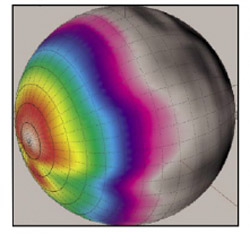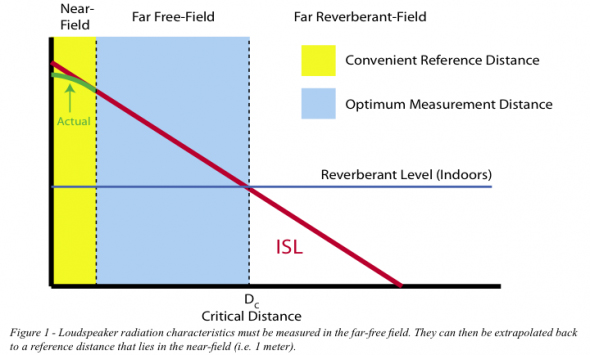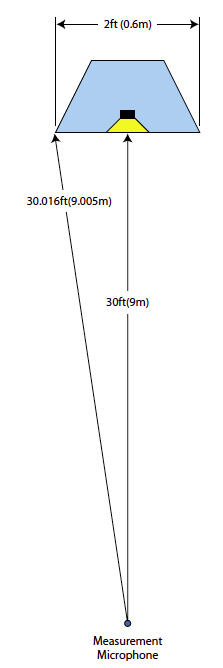The most common reference distance for loudspeaker SPL specifications is 1 meter (3.28 feet). The choice is one of convenience – any distance will do.
The 1 m reference simplifies distance attenuation calculations by eliminating the division required in the first step:

Loudspeakers must be measured at a distance beyond which the shape of the radiation balloon remains unchanged. The changes are caused by path length differences to different points on the surface of the device.
These differences become increasingly negligible with increasing distance from the source, much in the same way as any object optically “shrinks” as the observer moves to a greater distance.
The distance at which the path-length differences become negligible marks the end of the near-field and beginning of the far-field of the device.
An infinitely small source (a point source) can be measured at any distance and the data extrapolated to greater distances using the inverse-square law without error.
A very small loudspeaker might possibly be measured at 1 meter, but for larger loudspeakers it’s a different story. For large devices, the beginning of the far-field must be determined, marking the minimum distance at radiation parameters can be measured.
The resultant data is then referenced back to the 1 meter reference distance (Figure 1) using the inverse-square law. This calculated 1 meter response can then be extrapolated to further distances with acceptable error.
A Rule Of Thumb
A working “rule of thumb” for determining the boundary between near-field and far-field is to make the minimum measurement distance the longest dimension of the loudspeaker multiplied by 3.
While this estimate is generally acceptable for field work, it ignores the frequency-dependency of the transition between the near and far fields. More accurate estimates of the far field are found to be:
1. The point of observation where the path length differences to all points on the surface of the loudspeaker perpendicular to the point of observation are the same. Unfortunately this is at an infinite distance and the pressure is zero.
2. The distance at which the loudspeaker’s three-dimensional radiation balloon no longer changes with increasing distance from the source with regard to frequency.
3. The distance from the source where the radiated level begins to follow the inverse-square law for all radiated frequencies. And, a practical definition useful for determining the required measurement distance:
4. The distance from the source where the path length difference for wave arrivals from points on the device on the surface plane perpendicular to the point of observation are within one-quarter wavelength at the highest frequency of interest (Figure 2).


















